
© Doug Gifford. (Click image for larger version)
Simple and Wise, a Q&A about Ratmansky’s Sleeping Beauty for ABT
August 2013: Alexei Ratmansky – Balletic Musings, a Continuing Conversation
www.abt.org
This spring, American Ballet Theatre revealed its newest Sleeping Beauty, in a production by Alexei Ratmansky. The idea behind this version was, in its own way, quite radical: to wash away the layers of tradition and habit that had formed since the ballet’s première in an attempt to see the ballet with fresh eyes. (And believe me, people were surprised by the results.) To this end, Ratmansky mined a mountain of sources: photographs, drawings, film from the early thirties, descriptions in books. Perhaps most importantly, he learned to read a trove of notes written out in a system called Stepanov notation around thirteen years after the 1890 première. (Two dozen ballets were notated in this way after Petipa’s departure from the Imperial Theatres. The conservation project ended, predictably, with the Revolution.) Ratmansky’s was not the first attempt to return to a more genuine expression of Petipa’s style: there was the famous 1999 Mariinsky reconstruction by Sergei Vikharev, for example. Serge Diaghilev’s 1921 Ballets Russes staging, too, was based on these notes, a set of which had been carried out of Russia by the ballet master Nicholas Sergeyev. Sergeyev used them to recreate Petipa’s works in London for the Vic-Wells Ballet, the precursor of the Royal Ballet.
And yet, no two reconstructions are alike. The scores aren’t complete, and in any case rebuilding a ballet requires an endless series of choices, large and small, by the choreographer or ballet master. As the critic Arlene Croce once wrote, the best reconstructions are the result of a kind of “magic empathy,” something that goes far beyond slavish faithfulness to a score. Bellow, Ratmansky talks about the process of immersing himself in Petipa’s world, and what he found there.

© Fabrizio Ferri. (Click image for larger version)
His Sleeping Beauty, a co-production with La Scala, will have its European première in Milan in September.
When and why did you develop an interest in using Stepanov notation?
I heard about the notations long ago, but I was still very much focused on my own dancing/choreography to really investigate. The first time I saw a production that used them was the 1999 Mariinsky reconstruction of Sleeping Beauty. It generated a heated discussion in Russia and abroad and raised some important questions: How different is the ‘traditional’ from the ‘original’? Can the reconstruction from the notations be called ‘authentic’? Are we ready to sacrifice the familiar text and today’s technique to honor Petipa? And so on. I had mixed feelings about that 1999 production, but I take my hat off to Sergei Vikharev and his team for opening the doors and making it clear that Petipa is something quite different from what we see today in Russia. That was the hardest thing to accept for many. The Mariinsky was quick to drop the reconstructions in favor of a traditional Konstantin Sergeev staging from the 1950s. Since then I’ve discovered that British productions are also a far cry from the notations in many ways. As a choreographer I became anxious to find out what Petipa’s original text is and to connect/compare it to Vaganova, Balanchine, Ashton and other twentieth century developments. I think it was the main motivation when I set myself to learn the Stepanov system last spring.
When you worked on Le Corsaire at the Bolshoi in 2007, back when you were directing the company, did you use the Stepanov notations?
Yes, we did. My school friend Yuri Burlaka (we graduated together from Piotr Pestov’s class) learned how to read it long before me and I invited him to take care of the notated steps and also of the score, which is a mishmash. In the notations the mime is described in words and floor plans, so I was able to do the mise-en-scenes myself. Then we would sit together and compare all the known versions of the choreography with the archival documents. Yuri would say ‘oh, this dance in the notes is almost like it is done today’ and we would set a traditional version here and there. In other places he would follow the notations, sometimes adapting steps to the modern technique, or we would decide that the known version is preferable. So we used the notations, but we took them as a point of departure. The idea was to revive the mime and overall structure, and where possible to get rid of the later Soviet additions, because both of us agreed that Petipa knew better. The reconstructed Jardin Animé, one of Petipa’s greatest masterpieces, looked magnificent, but the problem was that the ballet’s most famous piece, the pas de deux a trois, is not notated at all. What we know is a compilation of steps from a dozen ballet masters and dancers of different times, so we left it more or less as it is done today. We don’t even know for sure if there is anything from Petipa in it…
How complete are the notations for Beauty and how much had to be filled in by you?
The Sleeping beauty notation is a solid 221-pages manuscript. Many dances and scenes are written down in detail, sometimes twice. However some numbers were missing, like the dances for 4 fairies’ cavaliers and Carabosse’s attendants in the Prologue, the first scene and the Awakening in Act II, the beginning, Red-Riding Hood and the Apotheosis in Act III. These scenes were staged, or rather assembled, by me. I had other sources to look at: pre-war Ballet Russe films from Australia, old Royal Ballet films and Russian productions of different times. Also many details came from the original reviews, drawings, evidence, pictures and so on. So much is written about Sleeping Beauty, you know. But the primary source was, of course, the notations. It is important to understand though that they leave a space for interpretation. Especially the movements of the arms for they are rarely written down. The connection with the music is not always clear. Lot of transitions and preparations are not given, so we had to guess. In some places it is obvious the notes were done in a hurry and never cleaned up afterwards, because it was notated in real time while the dancers rehearsed in the studio. The names that are mentioned in the notes take your breath away: Kshessinska, Gerdt, Marie Petipa, Pavlova, Karsavina, Trefilova, Egorova, Vaganova, Legat. All of them prepared their parts with Petipa, so it is safe to say it is the closest we can get to the ‘authentic’ text.

© Gene Schiavone. (Click image for larger version)
Why do you think these notations were made?
It all started with [Vladimir Ivanovich] Stepanov’s curiosity. Petipa was not crazy about the idea of notations (he said: ‘I am not interested in skeletons’), but the authorities of the Imperial Theatres decided to go ahead. As Petipa was in his 80’s and the new director didn’t like him and he was forced to retire, the question was how to preserve Petipa’s ballets. They started notating in the late 1890s. After Stepanov died at the age of 30 and Gorsky left to direct the Bolshoi, Sergeyev was asked to be in charge of the text of the ballets. He and his colleagues continued to notate the repertory until the Revolution. I think the last were from 1916 or so. Some have been lost. There’s a story that when Gorsky went to Moscow to stage Sleeping Beauty, he took his notations with him, and they were stolen at the first rehearsal. Unfortunately, his notations were never found.
How hard is it for the dancers to adjust to the different technique that emerges from the notes?
It’s definitely challenging for the dancers. They’re brought up with other versions of Sleeping Beauty; sometimes they’ve danced and worked on them all their lives. It takes courage to bend your knees in arabesques and flex your feet in B+ pose and not do splits and high retiré pirouettes. You feel very insecure without your usual tools. I remember when I was a dancer in Denmark, doing pirouettes from fourth; in Russia we always took them from second position. I couldn’t find my balance. I would try in rehearsal, but in performance I would always play it safe and go the old way. I cheated. But the dancers are so disciplined now, they do what you ask. I think many of them enjoyed mastering a new style and started to believe in it. And why not? It is such a beautiful and sophisticated way of dancing, especially for the women, who always look so graceful and feminine in Petipa’s choreography. The whole process has definitely enriched our dancers with new ideas and new coordination they could use in other roles.
What have you learned about Petipa from the notations?
Looking at the notations changed my taste. Honestly, I just can’t stand seeing productions of the classics any more, because I know how far it is from Petipa’s intentions. Imagine changing steps in ballets by Balanchine, Tudor, Ashton, Nijinska. Seems like a crime, doesn’t it? It goes without saying that they choreographed every step with care and meaning. Yet in Petipa we are perfectly all right to accept the corrupted text, knowing it’s not always his. And knowing he is probably the greatest of all. Why such an unfair treatment? Shouldn’t we dig in and reveal the real Petipa to see, to learn, to compare? I have no doubt it’s a must. I do realise, though, that the problem is more complex. The distorted ‘traditional’ versions consist of a century’s adjustments, sometimes by dancers and ballet masters of great talent. Some of it is marvelous; it gives an excitement, which authentic Petipa might not give. Some people even think his ballets survived only because of the changes; they evolved with the technique. Well, in my opinion, there is plenty of excitement in the originals, but of a different kind. The excitement of classical harmony, of elegance and precision. And musicality. Which is another sad story, because everything is played slower nowadays to accommodate endless technical additions, which humiliates both the music and the choreography

© Rosalie O’Connor. (Click image for larger version)
How has the timing and musicality changed?
If you lift your leg to 135 degrees instead of 45 or do a full split it takes more time. If you add a balance here and there and multiply the pirouettes it goes further in slowing down the original tempo. And then you add an extra trick at the very end and you want the orchestra to wait for you so you can finish with a big bang, like in the circus. (Why conductors approve of that is beyond my understanding). So the variation drags and loses its danciness and its character. Well, the original is never like that. Everything is faster and more alive. Faster pirouettes, less time spent in the preparations, no walking from one corner to another. Less amplitude and ‘wow’ effect maybe, but much more common sense. Stretching the lines to the extreme played a bad joke with Petipa. Too often it looks like a boring exercise, not exciting theater.
Can there be more than one valid interpretation of the notes?
In some places, yes. We are the second company to stage Sleeping Beauty from the notations, and our production is different from the Mariinsky in many details. I’m sure that in the future there will be other readings of the same notations. But there are things that are very precise. In the notations you clearly see all the mechanics of the dance: if the leg is bent or stretched, the angle of the bending, the height of the leg when it is lifted, its direction, whether you are on the floor or in the air and so on. It is possible to write down any movement with the Stepanov notation, not only ballet.
You’ve chosen to diverge from the original production in some aspects—why?
Well, we’re not using the original designs. We don’t have the original number of people. We have fewer. That is our reality. It gave us the right, so to speak, to accommodate some later additions to the text, the historically important ones, like the balances in the Rose Adagio, with the two arms up en couronne (they weren’t done that way until Margot Fonteyn). It’s one of the most well-known moments in Sleeping Beauty. Also the fish dives in the third act pas de deux. In a book that I have by Anton Dolin, The Sleeping Ballerina, he says that it was Piotr Vladimirov, the first Prince in the Diaghilev production, who invented the fish dives. I always thought it was Nijinska, but I had no proof. There was one ‘fish’ lift in the original pas de deux though at the end of the adagio. We do it differently in our Sleeping Beauty, not like it is done now. The man does not grab the lady’s thigh, he just takes her hips. It’s much more elegant, but more difficult. In the beginning of Act III we decided to use some characters from the 1921 production instead of the original ones in the procession of the fairy tales because of the gorgeous Bakst designs. And then there were inevitable cuts to get the whole ballet to last three hours (union rules). Cutting the score was a heartbreaking process, but I am proud to say we were able to preserve all the notated choreography intact and all the mime, although shortened, is there.

© Gene Schiavone. (Click image for larger version)
How has ballet technique changed since Petipa’s time?
The Italian guest stars of the 1880s-90s, including Cecchetti, made a huge impression on the Russians and were very influential at the Imperial Theaters at the time of Sleeping Beauty premiere. Petipa himself was quick to adopt the new technique, even though few years later he saw the danger of the extreme virtuosity and lamented the loss of grace in ballet (‘the decline of the ballet started with the Italians’ he said). This Italian impulse gave birth to a whole new style of dancing and produced brilliant generation which included Pavlova, Fokine and Nijinsky. That was the technique later taught by the Russian émigrés in Europe and America. At the same time the choreographers of Ballets Russes, especially Balanchine, introduced new movement ideas that enriched the style of dancing and became part of the Russian school in exile. Those who stayed in Russia were influenced by the enormous social changes that the Revolution brought: they were adopting the old school to the new audience and the new esthetic. Lopukhov and Vaganova were at the avant-garde of this new search. The technique changed again: broad athletic dancing, no mannerisms, little grace and sophistication, but heroic attack, acrobatic partnering, double turns in the air and other technical feats. Vaganova’s new coordination was based on her research of the human anatomy. To sum it up – the Italianized Russian school of Petipa in which ‘Sleeping Beauty’ was danced during the time the notations were being made and probably up until the Diaghilev 1921 staging was dramatically changed soon after by Lopukhov and Vaganova in Soviet Russia and by Balanchine in the West. But I have a feeling, after studying the notations, that there is another heir to the old Russian school, maybe the closest of all. It is Ashton, who was so inspired by Pavlova and had eagerly learned the technique from the former imperial dancers. It’s really remarkable how the notated steps resemble his choreography and style. In his own words, he ‘has learnt more from the lessons that Sleeping Beauty has to offer, than from any other choreographic experience’ of his life.

© Gene Schiavone. (Click image for larger version)
Why did you decide to use the Bakst designs?
To have the original 1890 designs would mean we would have to go into the original in all the elements of the production, which is just impossible because of the realities of ballet today. Besides, we saw the original designs in the 1999 Mariinsky production. The idea to use Bakst first came when I was planning the new Sleeping Beauty production for the big reopening of the historical Bolshoi Theater after the renovation. I have always loved how they look. They’re hard to surpass and are as much part of the Sleeping Beauty myth as any other component. Diaghilev and his 1921 team, which consisted of Bakst, Sergeev, Nijinska and Stravinsky, adored Petipa’s original and knew it very well. But Diaghilev wouldn’t be Diaghilev if he didn’t change things. So the result was a considerable departure from the original. Our biggest challenge was to balance the notated steps and Petipa’s choreographic intentions (which was a priority) and the Bakst designs. For example some important characters from 1890 were missing, like the pas de quatre of precious stones, Hop-o’-my-Thumb’s group, violin pages etc. The other problem that Richard (Hudson) had to face was the fact that Bakst didn’t care to represent different looks for the seventeenth century and 18th century. It all looks like Louis XIV.
Were you sorry to lose the panorama at the end of the second act?
It was a big disappointment to lose such an important part of the original production, and it’s such a beautiful theatrical trick. But we couldn’t do it.
Why did you decide to have the men’s legs covered with breeches?
It’s an interesting question because I thought the bare tights was a 1910’s development (we all know the story of Nijinsky’s dismissal from the Imperial Theaters because his bare tights shocked the Empress), but actually there are quite a lot of pictures of men in just tights from the 19th century. So I’m not sure when exactly they started to do that. But to my taste that would look very foreign to the Bakst designs.
How do you think the look of the ballet complements Petipa’s choreography?
I think Richard did a magnificent job. At the beginning I had hoped we would see Bakst as it was, unchanged. But I think he found a very fine balance. It’s not overwhelming and it’s not too little, because an integral part of the style is that the scene be overcrowded and overpopulated. The scenes are meant to portray the richest kingdom, and the richest court. And in a bigger sense, the ballet proudly portrays the richest and the most accomplished ballet company in the world, all levels of which are fairly represented on stage – kids of different ages from the ballet school, numerous supers to present costumes and nameless characters, male and female corps de ballet for group dances, female corps in tutus, coryphées and demi-soloists for the small groups, female soloists for the fairies, soloists for character roles and Act III divertissements, a second ballerina and second dancer and the principal couple. When this complex hierarchy is properly presented on stage with all their point shoes, soft shoes, heeled shoes, boots, etc and all their accessories and headdresses – the result is magical and grandiose. That’s Imperial Ballet at its best.
Why did you decide to use the wigs?
They’re a part of the Bakst style. It’s hard to imagine those fantastic headpieces and costumes without the wigs. Interesting that Diaghilev’s Auroras seem to have struggled with the wigs designed by Bakst in 1921. There are pictures of Spessivtseva in a heavy rococo wig and then in the same costume, but without it. Instead she wore a tiara of golden leaves on her own hair. The other Auroras followed her. I wonder who made the decision to change it, Diaghilev, Bakst or the ballerinas themselves.
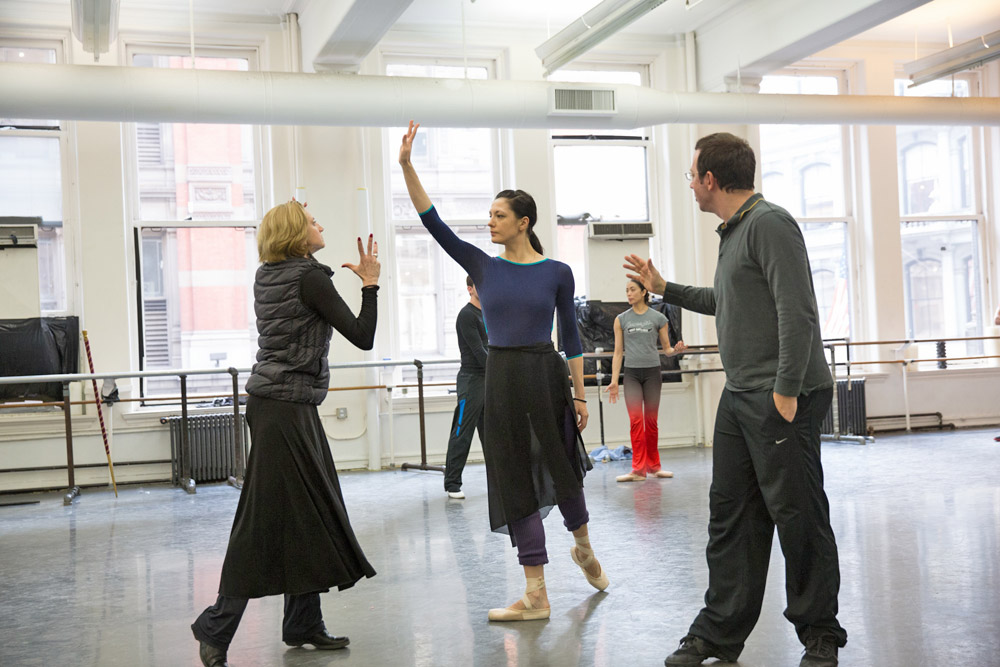
© Rosalie O’Connor. (Click image for larger version)
Why are Petipa’s male variations so seldom notated?
I’d like to spend more time studying his notated male variations. So far I’ve seen four and they are all remarkable, but very tricky. Petipa, like Balanchine, was really focused on the women. And the audience at that time didn’t really want to see men dancing. Not until 1900s. All the men’s variations were changed by later dancers. All the classic ones – Don Quixote, Corsaire, Bayadere, Swan Lake, Sleeping Beauty and others, that are performed under Petipa’s name today – are from 1930s-1960s. The notation score of Sleeping Beauty has two male variations written down. The Bluebird, which is definitely Petipa’s and prince Desire, which is not the original, because Pavel Gerdt didn’t dance it, but could also be choreographed by Petipa (the other possible authors would be Legat, Fokine, Cecchetti and Johansson). It’s a little closer in style to Bournonville, all that filigree footwork. It’s older stylistically. With the women’s technique, Petipa was more progressive. He had ladies from Milan who could hop on pointe, balance, pirouette. Their pointe work was much more developed. I think he was very inspired by that.
What are some of the key elements of the style, as you see it?
One of the important characteristics is the bent knees. The knee is rarely stretched where we are so used to have arabesques. In old books we see a description of the arabesque and the knee is bent. It gives so much more freedom to the body because your back is more relaxed, not tense to support the straight line. It also relaxes the shoulders and the neck. It’s a very different softness.
How about the upper body?
There are many places where it says, bend 45 degrees or more. Just like in Ashton! The changes in épaulement are astonishing. Most of the time the notation says which corner the body is turned to, and in which direction it should bend. Aurora’s first solo, for example, she does a diagonal of fourteen rond de jambes with hops on pointe. With each rond de jambe she changes épaulement three times. She starts to the left (from the audience’s perspective), then toward the right corner, then en face. It’s a triple change within one step. There are many places like that, but sometimes nothing is written for the body and we had to guess. There is much more information about the footwork in the notes.
Isn’t there far more demi pointe, for example in chaîné turns?
The use of demi point is extensive throughout the ballet, which is unusual by today’s standards. The whole picture becomes richer with all those extra angles, flexes and bends. Hundreds of different shades, like in good painting. Also there are more different heights for coup-de-pied – ankle, half-calf, knee. Texture, you see. As for chaîné turns, it’s our little discovery, one of many. The common belief is that chaînés on pointe weren’t done until 1940’s or 50’s, but in the notation there are chaînés on pointe for Aurora in her pas de deux in the third act, like a special treat. But most of the time they’re done on demi-pointe.
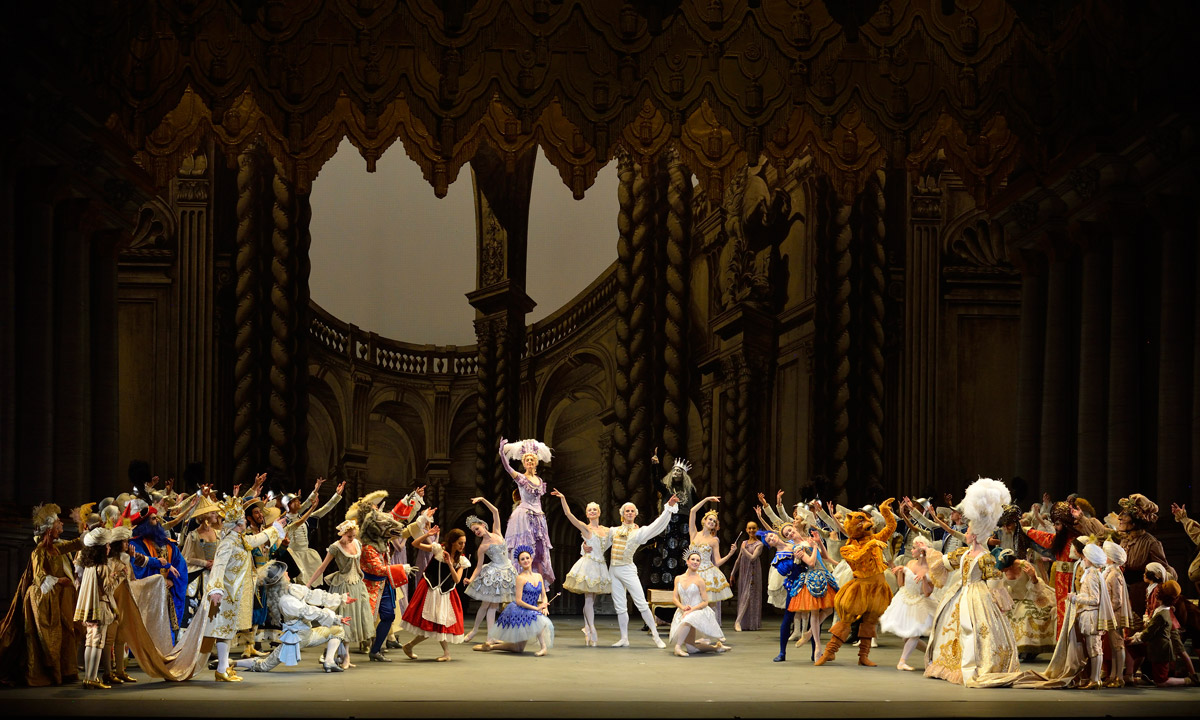
© Gene Schiavone. (Click image for larger version)
To your mind, what is the main historical significance of the Diaghilev 1921 production?
It was one of the first declarations of the importance of classical ballet, after the modernist revolution of the Ballets Russes. Diaghilev was one of the first to say that this classical style was timeless and a constant source of inspiration.
Where does the greatness of Sleeping Beauty lie?
There could be many interpretations of its symbolic meanings (as if the music and the choreography of genius were not enough). It touches the grandest themes, like life and death, chaos and order, art and memory. But it touches them with the simplest means, with almost childish naivety and warmth on the one hand and on the other – with the most sophisticated unattainable mastery of form. I think this combination is essential for the ballet as an art form. The ballet is both simple and wise. Sleeping Beauty has it and this has so much more. It is a real treasure. I can’t wait to work on it again.








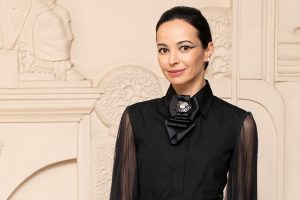

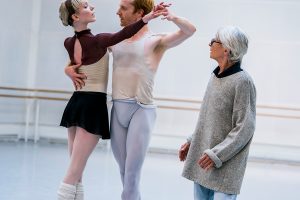

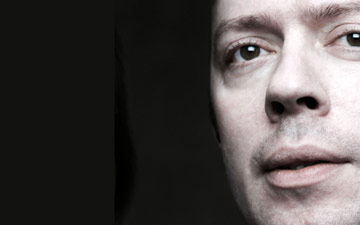


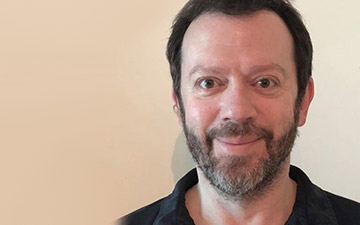

Amazing…. I have used the Fairy variations written in Labanotation which is much newer and surely not as authentic as your readings.
[…] “Honestly, I just can’t stand seeing productions of the classics any more, because I know how far it is from Petipa’s intentions,” Alexei Ratmansky told me a few months back, when we began discussing preparations for his new Sleeping Beauty, based largely on his interpretation of historical sources. He said many other things too. You’ll find them here, in this extensive q&a. […]